Add your promotional text...
Samsung Galaxy S8 (2017) Review A Benchmark in Smartphone Innovation
The Samsung Galaxy S8 (2017) remains a strong contender thanks to its gorgeous 5.8-inch Super AMOLED Infinity Display, which offers vibrant colors and sharp details, making everything from videos to apps look amazing. It’s powered by the Exynos 8895 (or Snapdragon 835) processor, ensuring smooth performance whether you're multitasking or playing games. The 12MP rear camera delivers great photos, even in low light, and the IP68 water resistance adds durability. However, the fingerprint sensor is awkwardly placed next to the camera, making it easy to smudge the lens. While Bixby, Samsung’s voice assistant, was still in its early stages and less intuitive than others, the 3.5mm headphone jack was a nice touch, even though it was later removed in newer models. Despite these small drawbacks, the Galaxy S8 offers a solid, premium experience with a beautiful design and strong performance.
SAMSUNG
11/22/202413 min read
Samsung Galaxy S8 (2017) Review
A Benchmark in Smartphone Innovation
Introduction
The Samsung Galaxy S8, released in 2017, marked a pivotal moment in smartphone design, setting new standards for both aesthetics and performance. With its striking 6.2-inch Quad HD+ Super AMOLED Infinity Display, the S8 introduced a near bezel-less, edge-to-edge screen that captivated users with its rich, vibrant colors and deep blacks. This display, combined with the phone’s sleek, glass-and-metal construction, gave it an undeniably premium look and feel. Powered by the Exynos 8895 (or Snapdragon 835 in some regions), the S8 offered top-tier performance, seamlessly handling demanding tasks like high-end gaming, video editing, and multitasking. The 12MP rear camera captured sharp, detailed photos even in challenging lighting, thanks to its large pixels and advanced sensor technology. The addition of IP68 water resistance provided peace of mind, making the device more durable than many competitors, and its wireless charging and fast charging capabilities ensured convenience for users on the go.
However, despite its many strengths, the Galaxy S8 was not without its shortcomings. One of the most notable design flaws was the fingerprint sensor, awkwardly placed right next to the camera lens, which made it prone to smudging and difficult to use efficiently. Another area where the S8 fell short was with Bixby, Samsung’s voice assistant, which was still in its early stages and failed to offer the same level of accuracy or integration as Google Assistant or Siri. While the 3.5mm headphone jack was still present, providing a much-appreciated option for wired audio, it was one of the last models to feature it, as Samsung eventually phased it out in favor of wireless solutions. The tall, narrow form factor, while visually striking, was less comfortable for one-handed use, especially for those with smaller hands. Furthermore, while the camera was excellent overall, it lacked some of the advanced features of later models, such as better optical zoom or improved night mode.
In this detailed review, we will explore the Samsung Galaxy S8's key features, strengths, and weaknesses, providing you with a comprehensive understanding of how it holds up in today’s market. Whether you’re drawn to its incredible display, solid performance, or its more nuanced flaws, this review will help you decide if the S8 is still a worthy investment in a highly competitive smartphone landscape.
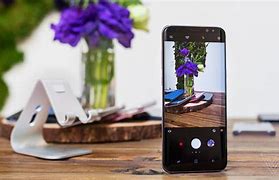

The Samsung Galaxy S8 truly shines when it comes to design. Its sleek glass body feels incredibly premium in your hand, and the 18.5:9 aspect ratio gives it a modern, stylish look. The 5.8-inch Quad HD+ Super AMOLED display with a 2960 x 1440 resolution offers vibrant colors and deep blacks, making it perfect for watching videos, playing games, or browsing your favorite apps. The near bezel-less screen not only looks stunning but also provides a more immersive viewing experience. While the placement of the fingerprint sensor next to the camera sparked some debate, it was a design choice made to maximize the screen space and give users a larger display to enjoy. Overall, the Galaxy S8 is a beautifully crafted device that balances form and function.
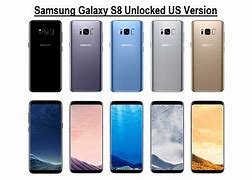

Physical Design and Usability
Key Features
1. Infinity Display
· 5.8-inch Super AMOLED HDR10 display with a 2960 x 1440 resolution for vibrant colors, deep blacks, and sharp details.
· 18.5:9 aspect ratio for a larger screen in a compact body.
· Edge-to-edge, bezel-less design for an immersive visual experience.
· Curved edges for a premium, futuristic look.
2. Premium Build & Design
· Glass and metal construction with Gorilla Glass 5 on the front and back for durability.
· IP68 water and dust resistance, allowing submersion in up to 1.5 meters of water for 30 minutes.
· Aluminum frame for a sleek, premium finish.
3. Powerful Performance
· Powered by the Exynos 8895 (or Snapdragon 835 depending on the region) chipset for smooth, fast performance.
· 4GB of RAM for seamless multitasking and app-switching.
· 64GB of internal storage, expandable up to 256GB via microSD.
4. Camera Excellence
· 12MP rear camera with f/1.7 aperture and Optical Image Stabilization (OIS) for clear, sharp photos, even in low light.
· 8MP front camera with autofocus for perfect selfies and video calls.
· Dual Pixel technology for fast autofocus and crisp photos.
5. Battery & Charging
· 3,000mAh battery for all-day battery life with normal usage.
· Supports fast charging (wired) and wireless charging for quick power-ups.
· USB Type-C port for faster charging and data transfer.
6. Advanced Security Features
· Fingerprint sensor for secure unlocking (though placed next to the camera).
· Iris scanner for unlocking with your eyes, offering a unique level of security.
· Facial recognition for convenient unlocking, though less secure than other methods.
7. Bixby: Samsung's AI Assistant
· Bixby voice assistant for voice commands, managing tasks, and smart controls.
· Bixby Vision for image recognition using the camera to identify objects and provide context.
8. Audio Quality
· AKG-tuned stereo speakers for rich, clear sound.
· Retained the 3.5mm headphone jack, allowing users to connect wired headphones without an adapter.
9. Software Experience
· Runs on Android 7.0 Nougat with Samsung Experience UI, offering a smooth interface with additional customization options.
· Features like Edge Panels for quick access to apps and tools.
· Always On Display shows time, notifications, and other important info without unlocking the device.
10. Connectivity Options
· Bluetooth 5.0 for faster speeds and better range.
· LTE Cat.16 support for download speeds of up to 1Gbps.
· NFC support for Samsung Pay and other contactless features.
11. Samsung DeX
· Samsung DeX support to turn your phone into a desktop-like experience when connected to a monitor, keyboard, and mouse.
12. Other Notable Features
· Smart Auto Focus for fast and precise focus, even on moving subjects.
· Expandable storage with a microSD card slot for up to 256GB of additional storage.
· Excellent multitasking performance with 4GB of RAM for a smooth experience.
Performance Analysis
The performance of the Samsung Galaxy S8 (2017) is a standout feature, reflecting Samsung's commitment to providing users with a device that excels in both everyday tasks and demanding applications. Central to this performance is the choice of processors: the Qualcomm Snapdragon 835 in the U.S. and the Exynos 8895 in other regions. Both chipsets utilize a 10nm process technology, which not only enhances processing power but also optimizes energy efficiency. This results in less heat generation and improved battery life, allowing users to enjoy extended periods of usage without sacrificing performance.
With 4 GB of RAM, the Galaxy S8 efficiently manages multitasking, allowing users to switch between apps seamlessly. This capability is particularly beneficial for users who engage in resource-intensive activities, such as gaming, video streaming, and productivity tasks. The Adreno 540 GPU (or Mali-G71 for the Exynos variant) elevates the gaming experience, delivering high-quality graphics and smooth frame rates even in the most demanding games. Gamers can enjoy titles with advanced graphics without experiencing lag or stuttering, thanks to the GPU’s powerful rendering capabilities.
The device runs on Samsung’s One UI, which is built on Android, providing a user-friendly interface that enhances overall performance. This software is optimized for responsiveness, featuring fluid animations and quick app launches that contribute to an enjoyable user experience. Samsung's smart management system ensures that background processes are efficiently handled, allowing the device to maintain peak performance even when running multiple applications simultaneously.
Storage options further enhance the device's performance, with 64 GB of internal storage that is expandable via microSD, allowing users to store a vast array of apps, photos, videos, and music without worrying about running out of space. This expandable storage capability is particularly advantageous for media-heavy users, as it allows them to keep their libraries accessible without compromising speed.
The Galaxy S8 also integrates advanced connectivity features, including Bluetooth 5.0 and dual-band Wi-Fi, which enhance its performance in terms of wireless data transfer speeds and connectivity reliability. These features ensure that users can enjoy high-speed internet access and maintain seamless connections to various devices, whether streaming content or transferring files.
The device's 4GB of RAM allows for effective multitasking and contributes to quick app loading times, although it can occasionally show limitations when confronted with the latest resource-intensive applications or extensive multitasking scenarios. Users may experience some app refreshes when switching between heavy applications, a sign that the aging hardware struggles under modern demands.
Battery performance, powered by a 3000mAh capacity, provides a satisfactory experience for average users; however, it may falter during prolonged sessions of heavy use, particularly in gaming or when utilizing features like high screen brightness and multitasking. In demanding situations, users may find themselves needing to recharge mid-day, especially when leveraging power-hungry features such as the always-on display or 1440p resolution.
Overall, the Galaxy S8 exemplifies a well-rounded performance profile, with its strengths lying in its speed, graphical capability, and software optimization. Yet, as smartphone technology continues to evolve, its limitations in RAM capacity and battery endurance become increasingly pronounced, marking it as a device that, while still competent, is overshadowed by newer iterations that offer enhanced specifications and capabilities
Market Positioning
The Samsung Galaxy S8, released in 2017, was strategically positioned as a flagship device aimed at discerning consumers who prioritize cutting-edge technology and premium design. Its sleek, modern aesthetics, characterized by the 5.8-inch Infinity Display and glass body, were designed to attract both tech enthusiasts and style-conscious buyers. The marketing strategy effectively highlighted features like the high-resolution camera, advanced biometric security (including facial recognition and an iris scanner), and robust performance capabilities, reinforcing its status as a top-tier device in a competitive landscape.
A significant strength of the Galaxy S8’s market positioning was its ability to leverage Samsung’s established brand reputation for quality and innovation. The company effectively created a sense of desirability around the S8, which was reflected in strong sales during its initial launch period. The inclusion of features such as IP68 water resistance and wireless charging further enhanced its appeal to consumers seeking durability and convenience.
However, as the smartphone market evolved, the S8 faced notable challenges. The rapid pace of technological advancement meant that, within a year of its release, competitors were introducing devices with superior specifications—such as improved processors, larger RAM capacities, and more versatile camera systems—often at lower price points. Additionally, the rise of mid-range smartphones equipped with high-quality features began to shift consumer expectations, prompting a demand for more value-oriented options. This shift made it increasingly difficult for the S8 to maintain its premium pricing and market share.
Furthermore, while Samsung's brand loyalty played a crucial role in the S8's initial success, the device's aging specifications and limitations compared to newer models led to a gradual decline in its desirability. As consumers began to seek out devices that offered better performance for their investment, the S8's market positioning became more precarious. Ultimately, while the Galaxy S8 set a high bar for premium smartphones upon its release, its continued relevance was challenged by the dynamic nature of the smartphone market and changing consumer preferences.


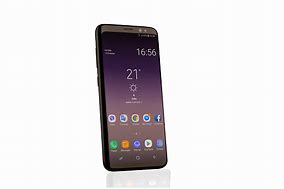

Benefits of the Galaxy S8
- Stunning Display: The AMOLED screen offers incredible visuals that enhance media consumption.
- Camera Quality: The camera excels in various lighting conditions, making it versatile for photography enthusiasts.
- Build Quality: Premium materials and a sleek design contribute to its durability and aesthetic appeal.
- Software Features: Samsung’s interface is feature-rich, offering customization options that many users appreciate.
Pros and Cons
Pros
- Excellent display quality
- Strong performance metrics
- Good camera capabilities
- Premium design and build quality
Cons
- Fingerprint sensor placement is awkward
- Battery life could be improved compared to newer models
- The price may be a barrier for some users
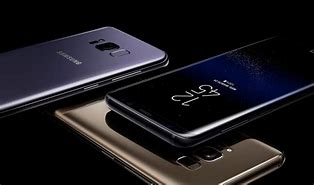

Price Ranges
At launch, the Galaxy S8 retailed around $720. However, as of 2024, you can find it in the range of $200 to $400, making it a more attractive option for budget-conscious consumers seeking a reliable smartphone.
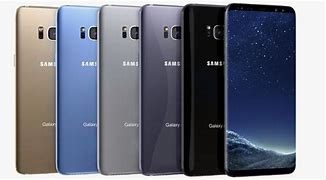

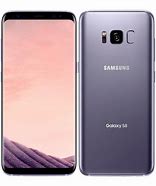

Comparative Analysis
The Samsung Galaxy S8 (2017) faces strong competition from other flagship devices of its time, including the Apple iPhone 8 and iPhone X, Google Pixel 2, and the LG G6. The Galaxy S8 stands out with its stunning 5.8-inch Infinity Display, offering an immersive, bezel-less experience that the iPhone 8 and LG G6 could not match, especially with their more traditional display designs. In terms of performance, the Galaxy S8's Exynos 8895/Snapdragon 835 chipset holds its own, though the iPhone X, powered by the A11 Bionic chip, outperforms it in raw processing power, especially in graphics and AI-driven tasks. The Pixel 2, on the other hand, is superior in terms of camera software and image processing, providing the best photo quality among its peers with its computational photography features, while the Galaxy S8’s camera still delivers solid performance but lacks the same level of AI enhancements.
Where the Galaxy S8 excels is in its design and feature set. Its IP68 water resistance, wireless charging, and the retention of the headphone jack give it an edge over competitors like the iPhone 8 and iPhone X, which had removed the 3.5mm port. The S8 also features an expandable storage option, a capability not found in the Pixel 2 or iPhone models. However, the placement of its fingerprint sensor next to the camera was a poorly received design choice, which many users found awkward and difficult to use, a flaw not as prominent in the other devices. In terms of battery life, the Galaxy S8 lags behind some competitors like the LG G6 and Pixel 2, both of which had better endurance on a single charge. Despite these weaknesses, the Galaxy S8's combination of cutting-edge design, strong performance, and feature set makes it a well-rounded option, particularly for users who prioritize aesthetics and versatility in their smartphones.
Overview of Samsung Galaxy S8
Release Date: April 2017
Display: 5.8-inch Super AMOLED, 1440 x 2960 pixels
Processor: Qualcomm Snapdragon 835 / Exynos 8895 (depending on the region)
RAM: 4 GB
Storage: 64 GB (expandable via microSD)
Rear Camera: 12 MP, f/1.7
Front Camera: 8 MP, f/1.7
Battery: 3000 mAh
OS: Android 7.0 (upgradable to later versions)
Weight: 155g
Dimensions: 148.9 x 68.1 x 8.0 mm
Key Competitors
1- Apple iPhone 7 / 7 Plus
Display: 4.7-inch / 5.5-inch Retina HD
Processor: A10 Fusion
Camera: 12 MP rear, 7 MP front
OS: iOS 10 (upgradable)
Battery: 1960 mAh / 2900 mAh
2- Google Pixel 2
Display: 5.0-inch AMOLED, 1080 x 1920 pixels
Processor: Snapdragon 835
Camera: 12.2 MP rear, 8 MP front
OS: Android 8.0 (upgradable)
Battery: 2700 mAh
3- LG G6
Display: 5.7-inch IPS LCD, 1440 x 2880 pixels
Processor: Snapdragon 821
Camera: Dual 13 MP rear, 5 MP front
OS: Android 7.0 (upgradable)
Battery: 3300 mAh
Strengths and Weaknesses Comparison
Samsung Galaxy S8
Strengths:
· Display Quality: The Super AMOLED display offers vibrant colors, deep blacks, and excellent contrast.
· Camera Performance: The 12 MP rear camera is versatile and performs well in various lighting conditions.
· Build Quality: The premium glass and metal design with IP68 water and dust resistance adds durability.
· Expandable Storage: Allows users to increase storage capacity with a microSD card, a feature often lacking in competitors.
Weaknesses:
· Battery Life: The 3000 mAh battery may not last as long as some competitors, especially under heavy use.
· Fingerprint Sensor Placement: Located next to the camera, making it prone to smudging.
· Software Update Timing: While Samsung has improved its update policies, it still lags behind Google in terms of update speed.
Apple iPhone 7 / 7 Plus
Strengths:
· Performance: The A10 Fusion chip is highly efficient, providing smooth performance for gaming and multitasking.
· Ecosystem Integration: Seamless integration with other Apple devices and services.
· Camera Quality: Especially strong in video recording and low-light photography (particularly in the iPhone 7 Plus).
Weaknesses:
· Display Size: Smaller display compared to the S8, which might be a downside for media consumption.
· No Expandable Storage: Users must choose their storage capacity at purchase.
· Less Customization: iOS is less flexible than Android in terms of customization options.
Google Pixel 2
Strengths:
· Camera Performance: Exceptional camera quality, especially for low-light photography, driven by software optimizations.
· Stock Android Experience: Clean and simple interface, with fast updates and a focus on performance.
· AI Features: Strong integration of Google Assistant and AI-driven features enhance user experience.
Weaknesses:
· Build Quality: While decent, it doesn’t match the premium feel of the S8.
· Battery Capacity: 2700 mAh may not support heavy users throughout the day.
· Limited Hardware: Less versatile camera setup compared to the S8.
LG G6
Strengths:
· Display: The 18:9 aspect ratio provides an immersive viewing experience.
· Battery Capacity: 3300 mAh battery offers longer usage times than the S8.
· Dual Camera: The dual-camera setup provides flexibility for photography, especially in wide-angle shots.
Weaknesses:
· Processor: The Snapdragon 821 is older and less powerful than the S835.
· Software Experience: LG's UX interface has historically been seen as less intuitive than Samsung’s or stock Android.
· Build Quality: Although premium, the G6 does not have the same level of refinement as the S8.
The Samsung Galaxy S8, released in 2017, remains a competitive device with its impressive display and camera capabilities. It holds its own against notable competitors such as the iPhone 7, Google Pixel 2, and LG G6, each of which brings unique strengths and weaknesses to the table. Users seeking a premium smartphone experience will find that the S8's combination of design, performance, and features make it a worthy consideration, even in an evolving market where new technologies and devices continuously emerge.
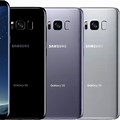

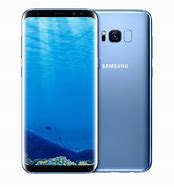

Evolution from Previous Models
The Galaxy S8 represents a significant evolution from its predecessor, the Galaxy S7. It introduced an edge-to-edge display, improved water resistance, and enhanced camera capabilities. These advancements addressed user feedback from previous models, particularly regarding screen size and dur
Impact on the 5G Market
Although the Galaxy S8 itself is not a 5G device, its introduction laid the groundwork for future Samsung models that would embrace 5G technology. The emphasis on high performance and advanced features in the S8 created a consumer expectation for subsequent devices, which would ultimately drive the transition to 5G con
Key Decision-Making Factors
When considering a mid-range smartphone, key factors include display quality, camera performance, battery life, and software features. The Galaxy S8 excels in display and camera performance but falls short on battery longevity compared to newer models.
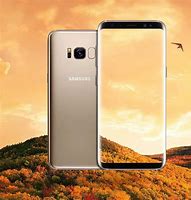



Conclusion
In conclusion, the Samsung Galaxy S8 (2017) still holds its ground as a highly capable smartphone, even several years after its release. It set a new standard for smartphone design with its breathtaking Infinity Display, providing vibrant colors and crisp details that remain impressive even by today's standards. The device's performance, powered by the Exynos 8895 or Snapdragon 835 chipset, offers smooth and efficient multitasking, making it a strong choice for those who enjoy gaming, media consumption, and everyday use without significant lag. Additionally, the 12MP camera remains excellent, especially in low-light conditions, ensuring users can capture clear, detailed photos.
While there are a few shortcomings, such as the fingerprint sensor's placement next to the camera and the average battery life compared to newer models, the Galaxy S8 remains an attractive option for those who value aesthetics, performance, and durability. The inclusion of features like IP68 water resistance, wireless charging, and the 3.5mm headphone jack (a rarity in today's phones) adds to its charm, making it even more appealing to users who still appreciate these classic features.
For those seeking a premium device without breaking the bank, the Galaxy S8 is an appealing choice in the current market, with its price now much more accessible. Its age may show in some areas, but its blend of design, functionality, and performance ensures that it continues to provide solid value, especially for those looking for a more affordable yet high-quality option. Whether you're upgrading from an older device or exploring Samsung's past flagship, the Galaxy S8 remains a well-rounded, dependable choice for a variety of users.
In-depth analysis of products across categories.
Contact us info@bestinclassreview.com
© 2024. All rights reserved.
Subscribe for Latest Tech
Article News & Reviews
📬 Stay Ahead with the Latest Tech Article News & Reviews!
If you found this review helpful and want to stay informed about the latest features, security updates, tech article news, and smart insights, don’t miss out on what’s coming next.
👉 Subscribe now to get fresh reviews, breaking tech news, in-depth tech articles, and expert analysis delivered straight to your inbox.
Be the first to know—because staying informed means staying secure.
🔔 Subscribe Here
Your smarter tech journey starts today!
